Notes from City Hall
Changes for City Government in 2017
In The Neighborhood
A Christmas Miracle
BALLSTON LAKE — They were told they were the lucky winners of a contest that granted them a three-day stay in a North Country hotel. For the Lefebvres – wife Kristin and husband Andrew and the kids Angelo, and Te’a, and Milana, and Anamaria - it was a respite for a family that could use a break. Yet, still, there was more.
The family of six shares a home on Ballston Lake with Kristin’s father and her older brother, Tommy, who suffers from severe autism and for whom Kristin is co-guardian. Seven-year-old Milana suffers from daily seizures and unexplained fevers and requires 24/7 care. Shortly after the Lefebvres’ 4-year-old daughter, Anamaria, was born, Kristin’s mother was diagnosed with cancer. “She passed very fast,” remembered Kristin, whose life as a parent to four children not-yet-in-their-teens can be stressful enough, to say nothing of the additional role as caregiver.
Since Milana was born, there have been frequent visits to Boston Children’s Hospital to see a variety of specialists in the hospital’s Complex Care Service, which provides comprehensive, coordinated and centralized care for children with complex medical needs. Milana’s illness is one for which there is no known medical reason. “There isn’t an overlying diagnosis to explain everything. She has had all kinds of genetic testing, and there is no explanation,” Kristin said. “I think it’s a good thing they can’t tell me she’s going to live for X number of years. I actually like that better. We ask, ‘Is she going to walk?’ because she has something like a walker and there’s a chance she can walk a little better in her equipment, but they don’t really say either way. They tell us, ‘I don’t know.’”
Securing outside help for assistance with the management of the home has been difficult, because people get frightened with her daughter’s daily seizures, she said. The three-day respite at the hotel was most welcome. “It was just so nice to not have to cook or run to appointments,” Kristin said. “We just stayed in the hotel the whole weekend.” Yet, still, there was more. At the family home 40 miles away, creatures were stirring all through the house.
“I was somewhat in on it,” Kristin admitted. “I knew they were coming, but until we got home I had no idea of the full picture of their work.” When the family returned to their home on a Sunday afternoon, they were amazed at what to their wondering eyes did appear. “When we arrived, what we saw was overwhelming. There was Santa. There were carolers and elves. There were 100 people outside the house - people who didn’t even know me,” she said. “The kids were looking out the window and were just completely surprised.”
The welcome committee was the creation of a partnering between the nonprofit organizations The Giving Circle and Jake’s Help from Heaven. The Giving Circle - an all-volunteer organization based in Saratoga Springs, was founded a decade ago by Mark Bertrand with a mission to seek out communities in need, connect them with the resources that could help, and to work locally with underserved families in Saratoga County.
“My two girls had met Mark from The Giving Circle. I explained they were special people who knew elves and when they saw all that was going on, I said: ‘You know, this is the magic of the elves,’ Kristin said. “They were just floored.” And yet, still, there was more.
When the Lefebvres departed for their three-day Lake George vacation - under the pretense of winning a contest - a team of volunteers descended on the family home and got to work. They created new rooms for the kids, renovated some rooms and reconfigured others; they decorated a Christmas tree and placed gifts beneath it; they painted walls, constructed shelves, installed interior paneling, and hooked up new efficient appliances to replace the cranky old appliances of a generation ago. Years of accumulated clutter was removed.
“It was an amazing sight. When we got back and looked, we were: Oh my gosh,” Kristin said. A special surprise also awaited her brother, who is a Yankees baseball fan. “My brother is autistic and hadn’t gotten a lot of attention since my mom passed. He got a big new room done up in a Yankees’ theme and during all the celebrating with the Christmas tree and the presents, one of the elves handed him a phone - it was a call from Mariano Rivera,” she said.
“Being a caregiver all the time, your world could get really small, really fast. You can feel you’re on an island sometimes and that’s why this project is so touching,” Kristin said. “For these people to come in and show that kindness, you know that we’re not alone, like we’re part of a community and that people do care. Having those people come in reminded me that people are out there.”
First Night ‘17
SARATOGA SPRINGS — The City Center was three years old, and First Night Saratoga not yet born when Pete Donnelly, Mike Gent, and Guy Lyons comingled their daytime studies at Saratoga Springs High School with their music at night to create The Figgs. On New Year’s Eve, members of the band present and past are headed on a collision course with the future to ring in the new year and celebrate the start of the group’s 30th anniversary.
“It’s a pretty extraordinary milestone. We’re coming in on 30 years and we’re very aware of it,” Donnelly explained. “There’s been plenty of ups and downs, but our relationship is pretty solid, and we’re still able to function as a band, and as friends.”
While the three current band members – Gent, Donnelly, and drummer Pete Hayes make their respective residences in different states, Saratoga Springs remains a special place to the band. “All of us have a warm spot in our hearts for Saratoga. My parents are there and it still pretty much feels like home. Every time we come to Saratoga it feels like a mini-reunion and we don’t do it that often anymore,” Donnelly said. “New Year’s Eve is special and this time Guy Lyons is joining us - he’s an original member- so there is a culmination of 30 years and New Year’s Eve in Saratoga. It’s representative of a lot of history.”
On a night to usher in the New Year that features more than 70 regional groups performing in 30 different venues, The Figgs stand at the top of the list, with performances at 6 p.m. and 9 p.m. on the big stage at the Saratoga Springs City Center, which sits less than two miles from the school where they played one of their earliest shows on a December night in 1987. In between, there have been more than a dozen albums - their 13th studio record, “On the Slide,” was released earlier this year – and some 1,500 shows staged at hallowed venues like the QE2, CBGB’s, and the Whisky A Go Go, various solo releases, side projects, and a 2013 TV commercial for a luxury car that featured the catchy post-new wave riffs of their song “Je T’adore.”
“As a kid I loved jazz music, Charles Mingus, Thelonious Monk, and I think a lot of people are surprised by that. Those were my idols, but with The Figgs, we love all music of all eras,” Donnelly said. “Our main influences coming up were the ‘80s underground bands coming out of Minneapolis like Hüsker Dü, and Black Flag out of California. When we began, we felt we were counter to the cheesy, schmaltzy ‘80s pop world we grew up in during the Reagan Era. Our music was an affront to that. It was an expression of searching for an identity in a banal world. It almost feels like it’s a return to that now.”
Donnelly’s first instrument was the bass, an Ibanez Roadstar II, purchased at Drome Sound in Albany on his 13th birthday. The family piano and his two brothers’ guitars and drums also received a lot of attention. When the band scored a major record deal with BMG’s Imago in 1994, the first thing Donnelly did was secure a classic 1965 Fender Jazz Bass from Lark Street Music – a classic instrument which he still plays today. It is a far different world than when The Figgs first started, and the band has rolled with the changes.
“With the Internet, I feel that the music industry has been castrated. People treat music like it’s something on the side, an accessory. Some people claim that it’s leveled the field, that everyone can play, but I think you have a much lesser pool of quality. The bar has been lowered. It’s like there’s an ocean of mediocre work and it’s hard to find your way through it,” Donnelly said. “But, I’m not one of those people who are angry, or resentful. It is what it is.
“Where the Internet is great is that it allows a band like us to maintain contact with our fans, and what’s the same is what’s been true forever: that there is a percentage of quality work, too. Musicians have to play. It’s their desire. And we play for the exact same reasons,” Donnelly said. “I know for me and for many of my dear friends and family, music is so precious that they couldn’t live without it - and I couldn’t live without making it.”
Notes from City Hall: Vote to Change Saratoga Springs Government Could Come in the Spring
SARATOGA SPRINGS — City residents could be voting as soon as next spring on a referendum to change the way the city has governed for the duration of its 101-year history.
This week, the 15-member Saratoga Springs City Charter Review Commission unanimously approved the drafting of a new charter, and in a 12-3 straw poll voted to draft a motion for a new form of government. The work will begin immediately to prepare a proposal for an alternative form of government to be considered by the commission, with the goal of being placed before the voters in spring 2017. A new form of government, if approved by voters, could go into effect as soon as 2018. “Changing a city’s charter is not something to be undertaken lightly,” said charter commission chairman Bob Turner. “I think the members of the commission felt very confident in their understanding of the city charter to make their decision. It was a long process, but well worth it.”
Turner said the commission’s goal was to conduct the most comprehensive and in-depth review of Saratoga Springs’ city government that has ever been executed. Interviews were conducted with 20 current and former city council members, 10 city hall department heads, and six other mayors and city managers, in addition to separate surveys of City Hall employees and potential City Council candidates. A town hall meeting and 30 committee and subcommittee meetings were held over the past 6 months.
City Workers: Commission Form of Government Doesn’t Work
A 16-question survey distributed to City Hall and Public Safety employees from Nov. 25 to Dec. 8 received 75 responses. More than eighty per cent of those workers have worked at City Hall for at least six years. The majority responded that political conflicts or tensions between department commissioners affected workers’ ability to do their jobs and nearly half said they didn’t trust deputy commissioners to make decisions in the best interest of the city. As to the commission form of government specifically, 71.8 percent of the city employees said they don’t believe it provides for effective management of the city, and most opted instead for either a strong mayor, or city manager form of governing.
Five members – the mayor plus four commissioners heading the departments of Public Safety, Public Works, Finance, and Accounts, respectively – comprise the Saratoga Springs City Council, which operates in a commission form of government. That is, each council member is responsible for administering their own department as well as serving as legislators. The concept was founded in Galveston, Texas in 1901 after a storm ravaged the city, killing more than 5,000 people and creating the need for a useful way of post-disaster governing. Five department heads were given equal say in how the city should be reconstructed. It proved to be an efficient measure. The city of Houston adopted a similar form four years later. By 1912, 206 cities in 34 states followed suit, from Margate City, New Jersey - with a population of 129, to Oakland, California, with 150,000 residents at the time. Saratoga Springs followed suit shortly after it was incorporated as a city in 1915.
Survey: Commission Form of Government Excludes Diverse Voices and Talent, Chairman Says
In a second recently issued survey by the charter review commission, a pool of 182 potential City Council candidates who were queried revealed that changing from the commission form of government would dramatically increase the number of people willing to run for City Council. Only 8.2 percent responded they would be “somewhat,” or “extremely likely” to run for one of the four commissioner positions in the current system of governing. More than three times as many said they were “somewhat or “very likely to run” were they to serve as a part-time legislator and did not have any administrative responsibilities.
Commission positions are paid an annual salary of $14,500 and hire a full-time deputy to run their office. Interviews with current and former commissioners revealed that many found it challenging to balance a full-time job with the dual demands of running a major department and legislating, a combination unique to the commission form of government. Seventy percent of the survey respondents reported working full-time.
“We clearly have a large pool of civically engaged citizens who want to serve the city, but are unable to make the time commitment required under the commission form of government,” Turner said. “The data shows we are excluding a diverse set of voices and talent.”
The Commission has met two to three times each month since June to conduct a comprehensive analysis of the charter. The next meeting will take place 7 p.m. Tuesday, Dec. 27 at City Hall.
Upcoming Meetings: The City Council will host a pre-agenda meeting 9:30 a.m. Monday, Dec. 19 and a full council meeting 7 p.m. Tuesday, Dec. 20 at City Hall. The Zoning Board of Appeals will host a meeting 7 p.m. Monday, Dec. 19 at City Hall.
Demolition on Caroline Street
Federal Deadline Urges City to Action on Affordable Housing
SARATOGA SPRINGS — City Mayor Joanne Yepsen looked up at the 50 or so people who crowded into City Hall Wednesday afternoon and spoke to the reason for the gathering. “We don’t want to become a community that only the elite can afford,” the mayor said.
The City Council’s special mid-day meeting on Dec. 14 effectively kicked-off an 18-month project to address affordable housing in Saratoga Springs.
“Residents are saying, ‘We are pricing ourselves out of our own city,’ meaning that the market rates are higher than what they can afford. I think it’s time for us as a council to address some of the short-term needs as best we can with some long-term solutions,” Yepsen said. “And affordable housing may not just be an option any more – it may be required by the federal government.”
The 1968 Affirmatively Furthering Fair Housing (AFFH), was amended in 2015 with a final rule that states communities must address affordable housing needs and come up with a consolidation plan to carry out actions. That plan is specifically due from Saratoga Springs in May 2020, with submissions due at the U.S. Department of Housing and Urban Development by October 2019. “We are planning this will take us about a year and a half to put together, so we’re starting at the right time,” Yepsen said.
Survey Says: Additional Housing Needed
A 228-page market study regarding housing needs in Saratoga Springs conducted during the summer by GAR Associates indicates a strong demand for additional housing in the city, and recommends multiple rent tiers targeting different income bands in the development of workforce, family, and senior housing. The study points to Saratoga Springs’ disparity in income levels as a supporting case to be made for affordable housing projects that specifically feature workforce-oriented and mixed-income housing, where attorneys would live in the same building as busboys, explained Saratoga Springs Housing Authority Executive Director Paul Feldman.
“Affordable housing to me is not only by the HUD standards (residents should not spend more than 30 percent of their income on housing), but for Saratoga Springs it’s taking care of our hospitality industry and making sure that the workers can get to work and live close to jobs,” Yepsen said. “So, it’s workforce housing for our hospitality industry and it’s allowing young professionals to move and work here.”
The study reported the average listing price of a new single-family home in Saratoga Springs is $504,000, the average annual earning salary is about $70,000, and that of the more than 600 housing units built in the city during the past decade -in addition to another 200 or so on the table in the future - none include an affordable housing component. “What the market study shows is that 80 percent of the people who need more affordable housing are Saratogians,” Yepsen said. “They currently live here and are having trouble paying their bills. Eighty percent of the people are our own people - and that’s why I’m taking this to heart. We need to do this. Hopefully this will be the beginning of a plan.”
There are several options to be explored, from working with private developers, to nonprofits. A decade-old Inclusionary Zoning ordinance revived by Sustainable Saratoga earlier this year calls for the dedication of a small percentage of all future units built be designated for moderate, or low-income households. In exchange, builders would receive a bonus that allows an increased density of the project. The IZ would also spread the dispersal of mixed-use affordable housing across the community.
“If the IZ ever passed the council, it would mean every developer, from here on in, would include a percentage of affordable housing,” Yepsen said. The proposal currently sits at the city and county planning boards for their respective advisory opinions, after which it will be required to pass through the city’s Land Use boards before being returned to the council for a potential vote. In a community with high-income characteristics such as Saratoga Springs, incentives often have to be provided in order to create the support for municipal approvals associated with affordable housing.
The Middle Class Gap
Yepsen said looking at the housing gap from a continuum of care spectrum, the path begins at the Code Blue emergency shelter, continues on to Shelters of Saratoga, and transitions to public housing and eventually private housing. But, that’s where the path ends. “That middle gap, to me, is what really is the crux of the problem, because you’re not eligible for help, yet you can’t afford the high-end condos either, so you end up stuck in the middle,” Yepsen said. “And Saratoga Springs is going to be feeling that more, unless we can at least introduce some other price points for housing in the city. It is for me, a priority and that is the reality of the situation. The question now is: What does the council want to do about it?”
The survey reports that land adjacent to The Saratoga Springs Housing Authority’s Stonequist Apartments would be ideal for a large mixed development. Currently, the city is looking at grant funding opportunities to develop 20 to 26 new affordable housing units at Jefferson and Vanderbilt Terrace. “We’re thrilled that we’re a thriving economic community and we don’t want that to change at all,” the mayor said. “Our package of assets and cultural opportunities are going to thrive and grow, but we’ve got to take care of our own too. We need to be both - an economically thriving tourist community and a residential year-round affordable community, with a high quality of life.”
Tear Down: Historic Building Couldn’t be Saved
SARATOGA SPRINGS — The demolition team arrived from Schenectady alongside the Thursday morning sun and began the delicate disassembly of a fragile 19th century building on Caroline Street ravaged by fire on Thanksgiving Day.
Efforts to salvage the structure, which included securing a third engineering opinion late Tuesday, proved unsuccessful.
“The result is not what we hoped,” said Saratoga Springs Preservation Foundation Executive Director Samantha Bosshart, in a statement issued Thursday morning.
The fire displaced residents of five apartments and forced the closure of four businesses on Putnam and Caroline streets. A faulty electrical extension cord located in a small storage area in the rear of the Mio Posto restaurant was targeted as the cause of the blaze. The structure deemed most seriously affected was a vacant brick building at 26 Caroline St. that is listed on the National Register of Historic Places and which had most recently housed the Living Room.
Two initial engineering reports deemed the building unsafe and recommended total demolition. On Monday, Bosshart approached the City Council on behalf of the Preservation Foundation and offered $2,000 to secure a third structural opinion and questioning whether any part of the building could be salvaged. The City Council, by a 4-0 vote, approved an emergency declaration seeking that third study, which was conducted Tuesday by Mike Miller of Ryan Biggs Associates.
“We walked through the building and it’s a devastating site, destroyed,” reported city attorney Vincent DeLeonardis afterwards, adding that preliminary findings of the third study were consistent with previous reports. No formal report had yet been presented, but DeLeonardis recited an email received from Miller, which read in part: “The extent of damage has compromised the structural integrity of the building at 26 Caroline Street and forms an unsafe condition. This forms a risk to the public in front of the building as well as to the adjacent properties. Further collapse of the building could occur at any time.”
In response, the Preservation Foundation reported that it did not know why steps couldn’t be taken to preserve the façade, particularly since they had yet to receive a copy of the owner’s structural report dated Nov. 30 that specifically addresses that topic, or a copy of the Ryan Biggs preliminary report. “The Foundation looks to the future of this site and working with the property owner and the Design Review Commission to ensure that replacement infill is appropriate in scale and design,” added the organization.
“I have a lot of options and will have to go through them one by one,” said the building’s owner by Louis Lazzinnaro. Prior to the fire, Lazzinnaro said he was hoping to refurbish the existing building, “but unfortunately that’s not going to happen now, so we’ll see what makes sense.”
Lazzinnaro said he purchased the building two or three years ago, and was still waiting for definitive answers regarding damage coverage from his insurance company. He’s currently working with an architect to create conceptual drawings of what might replace the building and while it’s too soon to tell what may be developed in the space, he said he assumes it will be a mixed-use development. “I had an independent engineer to see if the façade could be saved, but because of the way the building is - there’s no open space in the back - everything has to be done from the front,” Lazzinnaro said. “Most importantly, no one was hurt during the fire and I don’t want to see anyone get hurt during the demolition.”
The demolition will be done slowly and cautiously given the current state of the building’s integrity and is expected to take 1-1/2 to 2 weeks, according to early accounts. The stretch of Caroline Street where the buildings were damaged by fire will remain closed during the demolition. DeLeonardis said the Ice House was “not terribly affected” by the fire whereas Mio Posto is “in very rough shape, but is not as structurally precarious as 26 Caroline.” The structural status of Mio Posto restaurant on Putnam Street is not currently known.
The four businesses affected by the fire - Sperry’s restaurant, the Ice House, Mio Posto restaurant, and Hamlet & Ghost – remain closed. Brendan Dillon, co-owner of Hamlet & Ghost said he is hopeful the craft cocktail bar may re-open by New Year’s Eve.






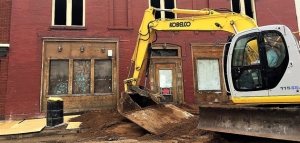



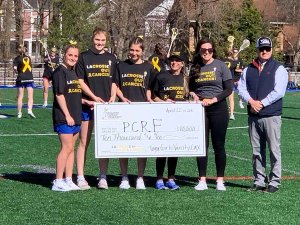



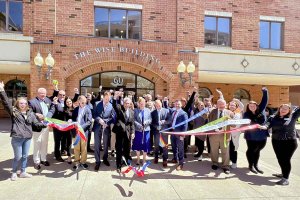



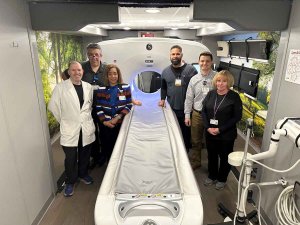
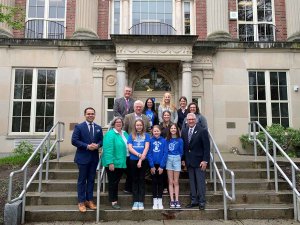
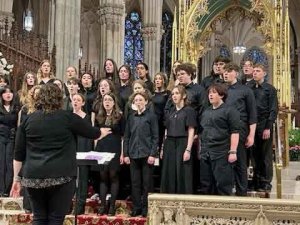








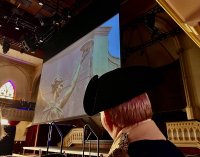


 How to resolve AdBlock issue?
How to resolve AdBlock issue? 









